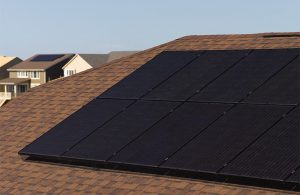Paderborn University’s Hawk-Powered Breakthrough Aims to Boost Solar Cell Efficiency
Paderborn University’s Hawk-Powered Breakthrough Aims to Boost Solar Cell Efficiency
by Robert Schreiber
Stuttgart, Germany (SPX) Feb 28, 2024
In a groundbreaking study at the University of Paderborn, researchers have embarked on an innovative approach to enhance solar cell efficiency, leveraging the formidable computational capabilities of the Hawk supercomputer at the High-Performance Computing Center Stuttgart (HLRS). This research, spearheaded by Prof. Wolf Gero Schmidt, delves into the strategic manipulation of impurities within solar cells to optimize their light-to-electricity conversion process. Funded by both the Baden-Wurttemberg Ministry for Science, Research, and the Arts and the German Federal Ministry of Education and Research through the Gauss Centre for Supercomputing (GCS), the project represents a significant leap forward in renewable energy technology.
Germany’s commitment to solar energy has seen a dramatic increase from less than one percent of its electricity production in 2000 to approximately 11 percent in 2022, thanks to a blend of favorable policies and technological advancements. With the pressing need for reliable energy sources amid global conflicts affecting fossil fuel markets, solar power’s role in Germany’s energy portfolio is set to expand further. However, the average efficiency of current solar cells stands at about 22 percent, highlighting a substantial room for improvement.
Schmidt’s team at the University of Paderborn, in collaboration with the Helmholtz Zentrum Berlin, embarked on this research to fundamentally understand and enhance the efficiency of solar cells. Utilizing the Hawk supercomputer, they focused on the dynamics of excitons-pairs of electrons and the gaps they leave behind when excited by light-in solar cells. Their research unveiled a counterintuitive discovery: introducing certain defects deliberately into the solar cell structure could actually enhance exciton transfer, thereby potentially increasing the cell’s efficiency.
The conventional wisdom in solar technology has largely revolved around creating perfect interfaces within solar cells to facilitate efficient energy conversion. However, this team’s approach, utilizing ab initio molecular dynamics (AIMD) simulations, suggests that imperfections, specifically silicon dangling bonds, can be harnessed to improve exciton transfer across interfaces.
This revelation could shift the focus of solar cell design towards integrating “perfectly imperfect” interfaces, a concept that challenges the traditional pursuit of flawlessness in material engineering. The team’s findings, published in Physical Review Letters, underscore the potential for strategic defects-previously considered detrimental-to play a crucial role in the next generation of solar technology.
By exploring materials like tetracene, which can split high-energy photons into two lower-energy excitations through singlet fission, the researchers aim to maximize the energy converted into electricity. This method stands in contrast to the limitations of silicon, which cannot fully utilize the energy provided by high-energy photons, resulting in significant energy loss as heat.
The implications of this research are far-reaching, not only for the advancement of solar cell technology but also for the broader pursuit of renewable energy solutions. As the global community faces increasing environmental challenges and the urgent need for sustainable energy sources, innovations such as those spearheaded by Schmidt and his team at the University of Paderborn offer a glimpse into a more efficient and sustainable future.
In conclusion, the University of Paderborn’s research, supported by the computational power of the Hawk supercomputer, represents a significant stride towards enhancing solar cell efficiency. By rethinking the role of imperfections in solar cells, this team is paving the way for more efficient and sustainable solar energy solutions, crucial for meeting the world’s growing energy needs while addressing environmental concerns.
Research Report:Defect-Assisted Exciton Transfer Across the Tetracene-Si(111):H Interface
Related Links
Gauss Centre for Supercomputing
All About Solar Energy at SolarDaily.com





